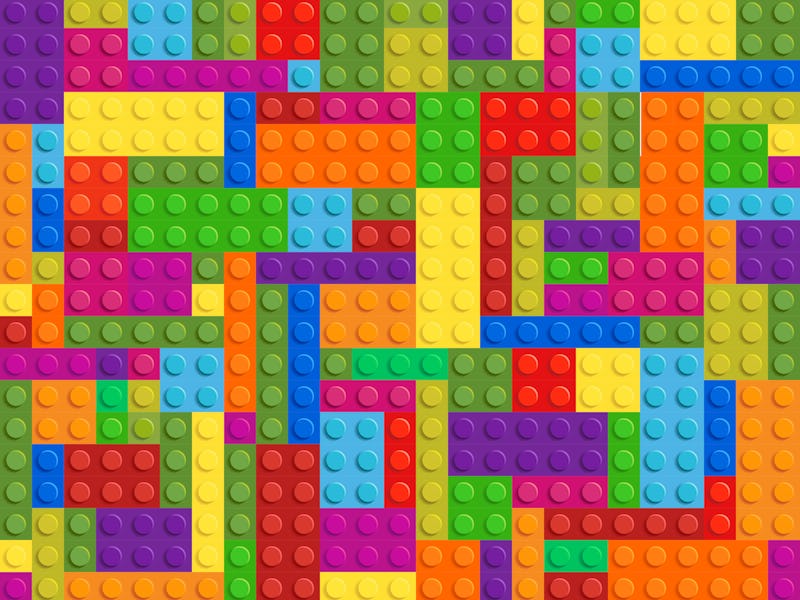The universe’s coldest LEGO could help scientists built quantum computers
Your childhood toy could change quantum technology forever.

The LEGOs sitting in your closet might not be living up to their full potential, scientists say. In addition to being a great multipurpose toy, scientists have now found that these plastic blocks could also play a crucial role in building quantum computers.
While we typically focus on the computational power of a quantum computer, the hardware behind it is no easy feat either. In order to make such jaw-dropping calculations, these computers need to be incredibly cold. A temperature of around -460 degrees Fahrenheit, or nearly absolute zero, is required to keep these systems stable. Those temperatures are good for quantum computers, but they’re not so easy to bear for other types of materials. While materials like Macor and Vespel have proven effective at such cold temperatures, those materials are difficult to get and expensive. But that could soon be changing because scientists have experimentally observed that simple, LEGO blocks work just as well — if not better.
The study was published Monday in the journal Scientific Reports and details the harrowing adventures of what the researchers dub the first-ever “cryonaut” (aka a LEGO astronaut) and a small stack of four LEGO blocks into the lab’s extremely cold dilution refrigerator. This dilution refrigerator is capable of reaching temperatures only millidegrees above absolute zero (equivalent to -273 Celsius or about -460 Fahrenheit) and scientists wanted to see how the LEGOs would fare under such conditions.
To better control the temperature of the LEGO stack in the dilution refrigerator the researcher attached a Copper plate at the top and bottom of the stack. Not only did the LEGO stack and the cryonaut survive the cold temperatures of the dilution refrigerator, but the team even found that the LEGOs displayed better thermal conductance than the popular bulk insulator Macor.
The team believes that this superior thermal conductance ability might be in part due to how the LEGO blocks lock into one another.
“Our results are significant because we found that the clamping arrangement between the LEGO ® blocks causes the LEGO ® structures to behave as an extremely good thermal insulator at cryogenic temperatures,” the study’s lead author, Dmitry Zmeev, said in a statement. “This is very desirable for construction materials used for the design of future scientific equipment like dilution refrigerators.”
This is an exciting result for the team because LEGO blocks are not only easy to get but also easy to use when replicating an experimental apparatus since there is very little variation between blocks of the same type. Additionally, the researchers write in the study that they believe the results observed in their LEGO trials could be abstracted to other 3D printed objects as well.
“[These results] suggest that we can readily transfer the concept to 3D printed components,” write the authors. “[LEGO material] is a popular base material for 3D printing. It would be straightforward to create complex cellular geometries with high strength, easy manipulation and low conductivity for use as a cryogenic insulator down to millikelvin temperatures and below. In this way, we could
simultaneously tune the conductivities and mechanical strengths to suit the application, such as supporting the mixing plate of a dilution refrigerator based quantum computer.”
The authors also note that the cost of an entire 3D printing set-up as described above would be equal to the cost of a single sheet of a more traditional thermal conducting material like Vespel. In that way, 3D printing thermal insulators using a LEGO-like material would not only be much easier but much cheaper as well.
Abstract:
We report measurements of the thermal conductance of a structure made from commercial Acrylonitrile Butadiene Styrene (ABS) modules, known as LEGO® blocks, in the temperature range from 70 mK to 1.8 K. A power law for the sample’s thermal conductivity κ = (8.7 ± 0.3) × 10−5 T 1.75±0.02 WK−1 m−1 was determined. We conclude that this ABS/void compound material provides better thermal isolation than well-known bulk insulator materials in the explored temperature range, whilst maintaining solid support. LEGO blocks represent a cheap and superlative alternative to materials such as Macor or Vespel. In our setup, <400 nW of power can heat an experimental area of 5 cm2 to over 1 K, without any significant change to the base temperature of the dilution refrigerator. This work suggests that custom-built modular materials with even better thermal performance could be readily and cheaply produced by 3D printing.